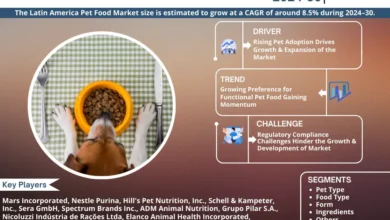

I. Introduction
A. Definition of HACCP Certification:
Hazard Analysis and Critical Control Points (HACCP) certification is a systematic preventive approach to food safety that addresses physical, chemical, and biological hazards in production processes. It is an internationally recognized certification that ensures food products are safe for consumption by identifying and controlling potential hazards at critical points in the food supply chain.
B. Importance of HACCP Certification in the Food Industry:
HACCP certification is paramount in the food industry as it ensures compliance with stringent food safety standards and regulations. It mitigates the risk of foodborne illnesses, protects consumer health, and enhances public trust in food products. Additionally, HACCP certification is often a requirement for international trade, enabling businesses to access global markets and remain competitive.
C. Purpose of the Blog:
The purpose of this blog is to provide comprehensive insights into HACCP certification, its significance in ensuring food safety, and its impact on businesses operating in the food industry. Through informative content and practical guidance, this blog aims to demystify the HACCP certification process, highlight its benefits, and offer valuable resources for businesses seeking certification and consumers interested in understanding food safety standards.
II. Understanding HACCP Certification
A. What is HACCP?
HACCP, or Hazard Analysis and Critical Control Points, is a systematic approach to food safety that identifies, evaluates, and controls hazards throughout the food production process. It focuses on preventing hazards rather than relying solely on end-product testing, making it a proactive and preventive approach to food safety management.
B. Components of HACCP Certification
The components of HACCP certification include conducting hazard analysis, determining critical control points (CCPs), establishing critical limits, implementing monitoring procedures, establishing corrective actions, and maintaining documentation. These components form the framework for effectively managing food safety hazards and ensuring compliance with HACCP principles.
C. HACCP Certification vs. Other Food Safety Standards
While HACCP certification is focused on identifying and controlling specific hazards in the food production process, other food safety standards, such as ISO 22000 and GFSI schemes like SQF and BRC, may encompass broader quality management systems. HACCP certification is often a prerequisite or integrated into these broader standards to ensure comprehensive food safety management.
III. The Process of Obtaining HACCP Certification
A. Step-by-Step Guide to HACCP Certification
- Conduct Preliminary Activities: Formulate a HACCP team, define the scope, and establish the objectives of the HACCP plan.
- Assemble Product Description: Detail the product’s intended use, distribution, and consumer expectations.
- Identify Intended Use: Determine the intended consumer, expected handling, and storage conditions for the product.
- Develop a Flow Diagram: Illustrate the production process from raw materials to finished product, identifying each step.
- Conduct Hazard Analysis: Identify and assess potential biological, chemical, and physical hazards at each process step.
- Determine Critical Control Points (CCPs): Determine the points in the process where control measures are essential to prevent, eliminate, or reduce identified hazards.
- Establish Critical Limits: Set criteria to distinguish acceptable from unacceptable operating conditions at CCPs.
- Implement Monitoring Procedures: Develop procedures to monitor CCPs to ensure they operate within critical limits, with records maintained to verify the system is working effectively.
B. Requirements for Obtaining HACCP Certification
To obtain HACCP certification, businesses must develop and implement a HACCP plan based on principles outlined by regulatory agencies or industry standards. This plan should include hazard analysis, identification of critical control points, establishment of critical limits, monitoring procedures, corrective actions, verification procedures, and record-keeping protocols.
IV. Benefits of HACCP Certification


A. Assurance of Food Safety and Quality:
HACCP certification ensures that food products meet stringent safety standards by systematically identifying and controlling hazards throughout the production process. This assurance not only protects consumers from potential health risks but also enhances confidence in the quality and reliability of the products.
B. Compliance with Regulatory Requirements:
HACCP certification demonstrates compliance with regulatory standards and requirements, ensuring that businesses operate within legal frameworks and uphold industry best practices. This compliance minimizes the risk of regulatory penalties and legal liabilities while promoting a culture of responsibility and accountability in food safety management.
C. Enhancing Brand Reputation and Marketability:
HACCP certification signifies a commitment to food safety and quality, enhancing brand reputation and credibility in the marketplace. Certified businesses can differentiate themselves from competitors, attract more discerning consumers, and access new markets where HACCP certification is a prerequisite for trade. This certification serves as a powerful marketing tool, driving customer trust and loyalty.
V. Implementing HACCP Principles
A. Hazard Analysis:
Hazard analysis involves identifying and assessing potential biological, chemical, and physical hazards that may occur at each step of the food production process. This systematic evaluation enables businesses to understand and prioritize risks, laying the foundation for effective control measures and risk management strategies.
B. Critical Control Points (CCPs):
Critical control points are specific points in the production process where control measures can be applied to prevent, eliminate, or reduce hazards to acceptable levels. Identifying CCPs is essential for implementing targeted control measures that ensure the safety and quality of food products.
C. Monitoring, Corrective Actions, and Record-Keeping:
Monitoring involves regular observation and measurement of CCPs to ensure they remain within critical limits and hazards are effectively controlled. Corrective actions are procedures implemented when monitoring indicates a deviation from critical limits, aiming to address the issue promptly and prevent unsafe products from reaching consumers. Record-keeping ensures that all monitoring and corrective actions are documented, providing evidence of compliance and facilitating traceability in the event of an audit or recall.
VI. HACCP Certification: Industry Applications
A. HACCP in Food Manufacturing:
In food manufacturing, HACCP certification is crucial for ensuring the safety and quality of processed foods. It involves identifying potential hazards in manufacturing processes, such as contamination during production or packaging, and implementing control measures to mitigate these risks. HACCP certification in food manufacturing helps businesses comply with regulatory standards, maintain product consistency, and uphold consumer trust in the safety of their products.
B. HACCP in Food Service and Hospitality:
HACCP principles are essential in food service and hospitality establishments to prevent foodborne illnesses and ensure guest safety. From restaurants to catering services, HACCP certification involves implementing hygiene practices, monitoring food handling processes, and maintaining sanitary conditions in kitchens and dining areas. Certification not only safeguards public health but also enhances the reputation of food establishments, reassuring customers of their commitment to food safety.
C. HACCP in Agricultural and Fisheries Industries:
In the agricultural and fisheries industries, HACCP certification is instrumental in ensuring the safety of fresh produce, meat, poultry, and seafood. From farm to table, HACCP principles are applied to identify and control potential hazards, such as contamination from pathogens or chemical residues. By implementing HACCP practices, agricultural and fisheries businesses can minimize risks, comply with food safety regulations, and maintain the integrity and quality of their products, thus safeguarding consumer health and confidence.
VII. Future Trends and Innovations
A. Advancements in HACCP Technology:
The future of HACCP certification is intertwined with technological advancements, including the integration of artificial intelligence, blockchain, and Internet of Things (IoT) devices. These technologies enable real-time monitoring of critical control points, enhanced traceability throughout the supply chain, and automated data analysis for more effective risk management and compliance with HACCP standards.
B. Emerging Practices in HACCP Certification:
Emerging practices in HACCP certification include the adoption of holistic food safety management systems that incorporate risk-based approaches, such as Total Quality Management (TQM) and Food Safety Management Systems (FSMS). These approaches emphasize proactive hazard identification, continuous improvement, and stakeholder engagement, aligning with the evolving needs of the food industry and driving innovation in HACCP certification processes.
VIII. Conclusion
A. Recap of the Importance of HACCP Certification:
HACCP certification is paramount in ensuring food safety, compliance with regulations, and enhancing consumer trust. It provides businesses with a systematic approach to identify and control hazards, ensuring the production of safe and high-quality food products.
B. Final Thoughts and Recommendations:
Implementing HACCP principles not only safeguards consumers but also strengthens brand reputation and marketability. It is recommended that businesses prioritize HACCP certification and continuously strive for excellence in food safety management.









